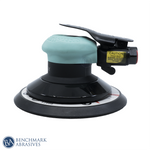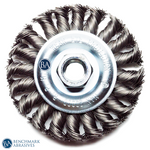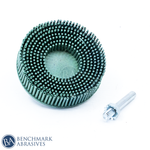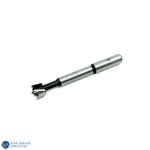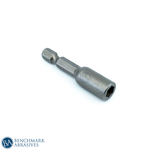
Navigating The World Of Abrasive Grit: Understanding The Grading System

An orbital sander is one of the power tools that every person, whether a professional or a hobbyist, has to own. However, there are a few things you'll need to learn if you're unfamiliar with the world of sanding. The proper grade to utilize is one of the things you need to know at all times. It can be difficult for a complete novice to understand how grit size is rated and which grits are ideal for different purposes. We're going to give you a quick rundown of abrasive grit grades today.
WHAT SIGNIFICANCE DO THE NUMBERS HAVE?
Let's speak about the grading system for a while before we get into how the different grit grades are applied.
As you may already be aware, abrasive products are finer the higher the grit number. This is because the amount of sharp particles per square inch of sandpaper determines the grit size of an abrasive sheet. We also obtain the abrasive grade from the grit size. This serves as a gauge of the sandpaper's grit level and how coarse or fine it is.
Therefore, a smaller abrasive grain and a finer abrasive substance are indicated by a higher grit number.
When a "P" appears before the grit size, it means that the product is graded using the European FEPA standard. Products with a P in front of the grit size should always be sought after since using this standard for measurement guarantees both a precise number and smooth sanding.
USAGE INDICATION
The grit size of abrasive grains is frequently used to define the categories coarse, medium, and fine. They vary from over 400 (extremely fine) to 40 (very coarse). High-quality sandpaper will contain universally sized grit. The sandpaper is categorised by "grade" according to the size of the grit as follows:
- COARSE GRADES
We will begin with the lowest echelon of grit ratings. These are usually in the range of 40 to 60, though there are coarser grades. Sandpaper with a coarse grain can be used to remove paint, rust, and other debris, among other easy jobs.
- MEDIUM GRADES
An abrasive classified as medium coarseness would have a grit rating of between 60 and 120. This grit level can effectively shape wood, particularly when it comes to tasks like rounding corners. It might also be a wise choice for soft woods' initial sanding.
- FINE GRADES
Fine grades differ significantly from one another. Anything between 120 and 280 will be plenty good for most individuals. This grade may be used for everything from essential purpose sanding to smoothing finishes in between paint layers. The majority of folks won't need to ascend much higher than roughly 220.
However, considerably finer abrasive grit grades are available, typically reaching 600. These can be used to polish stone and other ceramic materials. Grit grades higher in this range are not usually used for wood.
WHICH GRADE TO USE?
When sanding, begin with a low-grit abrasive (Coarse-Graded) for maximal stock removal. Depending on the state of your wood, select the precise grit you need and work your way up to the desired finish. But keep in mind that as you work your way from coarse to fine, you don't need to use every grit.
For fine work and wood finishing, use a fine-graded abrasive, such as 150 grit for open-grain wood or 180 grit for closed-grain wood. For oil finishes, it is preferable to use even more grit—up to 240 grit.












